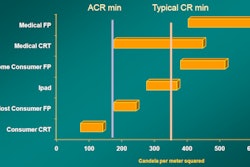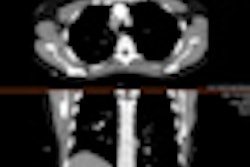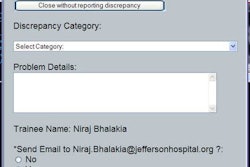WASHINGTON, DC - Despite their many advantages, online social networks also offer a number of pitfalls for radiologists, according to a presentation on Friday at the Society for Imaging Informatics in Medicine (SIIM) meeting.
Caution should be exercised in using social networks to interact with patients, but physician-specific sites provide an excellent opportunity for peer collaboration, said presenter Dr. Prasanth Prasanna of the University of Maryland Medical Center.
"Online social networking, while immature, has the potential to be a very powerful tool for both patients and physicians," Prasanna said.
Patients today are increasingly searching online for their healthcare, looking up information on diseases and treatments. As a result, physicians need to meet them online to deliver this care, Prasanna said. Current social networking sites include nonphysician-specific sites such as Facebook, Twitter, LinkedIn, and PatientsLikeMe, while physician-specific sites include Sermo, MedicalPlexus, Doximity, and radRounds.
An online presence can be powerful: In an internal survey at PatientsLikeMe, 12% of patients reported that their treatment courses were changed due to information on the Web site. The site has also been able to aggregate more patients to participate in clinical trials for rare conditions such as amyotrophic lateral sclerosis (ALS), Prasanna said.
Tweets from the operating room can speed dissemination of information to both families and physicians, and creating social networks of support for people with the same illness allows them to exchange experience and information, he said.
Social networks can also facilitate sharing of anonymized teaching files and provide collaborative care regardless of geographic restriction. In addition, patients can gain a better awareness of radiology procedures, Prasanna said.
Pitfalls
But the advantages of social networks also come with pitfalls, including HIPAA confidentiality issues, online etiquette and expectations, and the sensitivity of material posted online, according to Prasanna.
"Your credibility as an individual and as a healthcare provider can be damaged," he said.
Sensitive material such as HIV or cancer diagnoses should be handled face to face, not over email or social networking platforms, he said.
Social networking technology can also alter the doctor-patient relationship by increasing power distance (i.e., the extent to which power, prestige, and wealth is unequally distributed within a culture) due to increased physical distance. But power distance can also decrease as patients become empowered with more knowledge.
"Traditionally, physicians have been known as [authority figures], and as patients get more knowledgeable about their diseases, this decreases the power distance," he said. "However, we can also physically distance ourselves from patients by use of social networks, now making us more of a distant authority figure."
Social networks can also create a dual relationship when a patient is "friended," and professionalism must be maintained at all times, Prasanna said.
There's also a lot of misinformation on social networks, such as fake testimonials on Facebook pages. What's more, there is no peer-review process to verify the veracity of medical statements, he said.
The American Medical Association (AMA) released guidelines in November 2010 that call for maintaining HIPAA and confidentiality, safeguarding personal information and monitoring of Internet presence, and maintaining professional ethical guidelines in online patient interaction, Prasanna said.
The AMA recommends that physicians consider separate personal and professional online content, as well as the need to monitor each other. It's also important to recognize the possible negative effects and loss of public trust from content, according to the group.
Email guidelines released in 1998 from the American Medical Informatics Association (AMIA) include several parallels with online social networks, Prasanna said. The AMIA recommends a separate consent form for email communication, expectation management for emails, and documenting communication in patients' charts.
Social networking strategies
Radiologists generally do not have too many patients, with the exception of interventional radiologists. However, "friending" patients is usually not the best course of action to maintain professionalism and the doctor-patient relationship, he said.
"You probably don't want patients knowing too much about you, and you probably don't want to know too much about them, either," Prasanna said.
"It's common sense: If you don't want your mom, your grandma, or your kids seeing what you said, you probably shouldn't write it online," he said. "And it may be best not to have an online presence," he said.
On the other hand, physician-specific sites can be used for collaborative work, learning about new techniques and clinical trials, and asking or answering questions from colleagues, Prasanna said. They can also be used for virtual journal clubs and online teaching files.
In terms of interacting with patients, frequently-asked questions or question-and-answer blogs could help patients further understand upcoming procedures, according to Prasanna.
"If necessary, a physician could reach out specifically to that patient via email or phone, or have them come in and speak to them," he said.




















